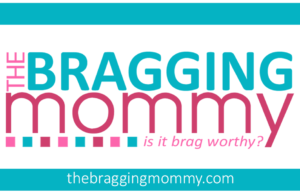Every child is a little creator, full of ideas and ready to bring them to life. As parents, we can help unlock this potential by creating an atmosphere at home that is conducive to creative play, even from a very young age. Thinking about age-appropriate activities for toddlers alongside older children ensures everyone can participate. This doesn’t require complicated materials or a huge budget, just your desire, a little time and knowledge of a few simple principles. In this article, we will share with you effective and fun ways to organize creative play at home, using educational toys and handy materials.
Why is creative play so important to a child’s development?
Creativity is not just the ability to draw or sculpt. It is the ability to think outside the box, find solutions in non-standard situations, fantasize and experiment. Developing creative skills is essential for a child’s all-round development:
- Development of cognitive skills: Creative play stimulates brain activity, improves memory, attention and logical thinking. The child learns to analyze, compare, contrast and draw conclusions.
- Development of emotional intelligence: Through creativity, the child expresses his/her feelings, learns to control emotions and understand others. Games help to cope with fears and worries.
- Developing social skills: Creative play together teaches children to work in teams, share, negotiate and respect others’ opinions.
- Developing fine motor skills and coordination: Modeling, drawing and constructing develop fine motor skills, coordination and prepare the hand for writing.
- Building self-confidence: When a child sees the result of his work, he feels a sense of satisfaction and pride in himself. This increases self-esteem and self-confidence.
By the way, HandMoto is a wide range of children’s educational toys that will help you organize exciting and useful creative development at home. Here you will find toys for different ages and interests, which will help to develop fine motor skills, logical thinking, imagination and creative abilities of your child.
Creating a creative space at home
Before you start playing, it’s important to prepare a space where your child can create freely without fear of getting dirty or breaking something.
- Determine the place: It can be a corner in the children’s room, part of the kitchen or even the balcony. The main thing is that this place should be convenient and safe for play.
- Prepare materials: Gather all the necessary materials: paints, brushes, pencils, felt-tip pens, plasticine, play dough, colored paper, cardboard, scissors (with supervision!), glue, buttons, beads, thread, fabrics, natural materials (leaves, cones, stones) and various educational toys.
- Protect the surface: Cover the table with a tablecloth or an old newspaper to keep it from getting ruined.
- Don’t be afraid of mess: The creative process is often accompanied by mess. Don’t scold your child for this, but rather help him or her clean up after play.
Creative games for children 3-5 years old
At this age, children become more independent and can participate in more complex games.
- Drawing with colors and pencils: Invite your child to draw not only on paper, but also on rocks, leaves, fabric. Experiment with different drawing techniques.
- Molding with plasticine: Help your child mold animals, birds, cartoon characters. Use a variety of sculpting tools.
- Paper and fabric appliqués: Cut out different shapes from paper and fabric and glue them onto cardboard. Create whole pictures.
- Construction: Use a variety of building tools: wooden, plastic, magnetic. Help your child build houses, cars, robots.
- Dress-up games: Invite your child to dress up as different characters: a princess, a knight, a pirate. This develops imagination and acting skills.
- Theater: Act out scenes from fairy tales with your child or make up your own stories. Use puppets, masks, costumes.
- Handmade musical instruments: Make simple musical instruments with your child from ordinary materials: a drum from a saucepan, maracas from plastic bottles.
- Role-playing: Play doctor, store, school. These games will help your child try on different roles and develop social skills.
- Conducting science experiments: Simple experiments with water, baking soda, vinegar, and other safe materials will help develop an interest in science and logical thinking.
- Play with developmentally appropriate toys: Use puzzles, board games and art kits that are age-appropriate and help develop different skills. To keep things exciting for older kids, consider creative activities for 3-5 year olds that introduce new techniques, like tie-dye kits or modeling clay sets with intricate molds. For example, jewelry making, sewing or wood burning kits.
Important tips for parents
Lead by example. If you are creative, your child will follow your lead. Draw together, sculpt together, make crafts. Do not criticize – do not evaluate your child’s creativity in terms of «right» or «wrong». What matters is the process, not the result. Encourage experimentation – don’t be afraid to let your child experiment with different materials and techniques. Ask your child questions about their art: «What are you drawing?», «Why did you choose those particular colors?», «How do you feel when you draw?».
Hang your child’s drawings and crafts in a prominent place. This builds self-esteem and encourages further creativity. Create a special folder or box to store your child’s artwork. This will become a wonderful childhood memory. Encourage your child to make up their own stories, poems and gifts for loved ones.
Using educational toys
Educational toys can be a great tool for developing a child’s creativity. They offer a structured approach to learning and allow the child to learn new skills in a playful way. When choosing educational toys, pay attention to:
- Child’s age: The toy should be suitable for the age and developmental level of the child.
- Child’s interests: The toy should be interesting to the child and correspond to his/her hobbies.
- Quality of materials: The toy should be made of safe and quality materials.
- Developmental potential: The toy should contribute to the development of various skills and abilities.
Conclusion
Creative play is not only a fun activity, but also an important tool for a child’s development. Finding engaging educational activities for toddlers at home can be easier than you think, often involving everyday household items. By creating a creative atmosphere at home, you help your child to discover his or her potential, develop important skills and abilities, and get a lot of positive emotions. Remember that the most important thing is your attention, support and love. Play together with your child, rejoice in his successes and enjoy the process of creativity! Do not be afraid to experiment, improvise and invent new games. After all, creativity is an endless world of possibilities that awaits its explorer!



